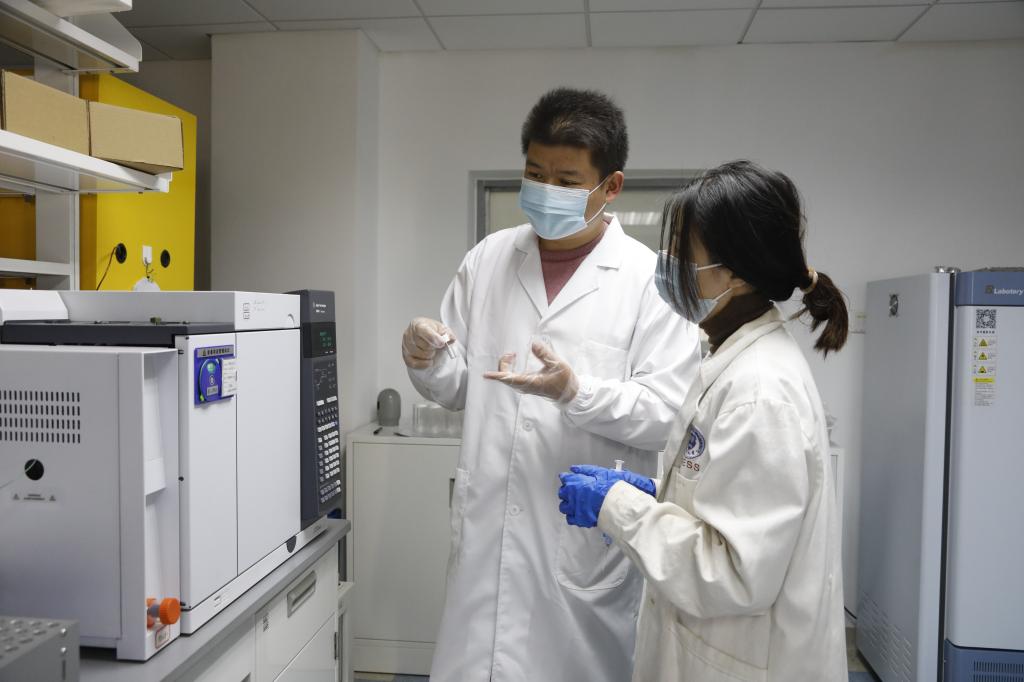Whether it’s online instruction or on-site experiments in the laboratories, faculty and students always stick to the front line of scientific research.
In the “Lab for Nano Iron-Carbon Team” of the School of Earth System Science, TJU, Mr. Sun Fusheng has been patiently answering students’ questions, guiding them to conduct an indoor culture experiment on the aerobic greenhouse gas emission from the frozen soil of the Qinghai-Tibet Plateau.

“In the context of global warming, the exploration of the mechanism for carbon sequestration and its response to the rising temperature in the frozen earth of Qinghai-Tibet Plateau (third pole) can provide data and theoretical instruction for the realization of our country’s carbon peaking and carbon neutrality goals,” Sun said. Coordinated by his students, Sun’s experiment primarily detected the effect of the warming process on the production of greenhouse gases (CO2, CH4, and N2O), and thus figured out the temperature sensitivity (Q10) of the organic components in the frozen soil under the condition of warming. “It requires continuous culture testing which should last for a whole month without any suspension,” said him.

Feng Wei, deputy director of the College of Intelligence and Computing, focusing on the visual relationship detection and calculation in the open environment, developed three main application scenarios, namely active visual perception and application in the open environment, mobile visual content analysis and understanding, and sign language recognition and gesture interaction. Under his guidance, more than 20 students worked in an orderly way.

According to his students from four groups with different research projects, Mr. Feng worked hard from morning till dusk daily, being deeply absorbed in the research—he is either in the lab or on his way to the lab.

One of the four research groups was working on a collaborative project with the Hunan Provincial Museum named “Identification of Movable Cultural Relics”, the results of which would be delivered by the end of this year. Such a skilled experiment called for the field adjustment and guidance on 6-axis desktop cooperative mechanical arm, 5000W pixel single-lens reflex camera (SLR), industrial camera, and microscopic lens. The pertinent achievements would facilitate 3D blemish detection in intelligent processing as well. Another group was collecting multi-view data in the open space through unmanned aerial vehicles (UAV) and mobile cameras to test the various performance of the self-developed spatial relationship perception system.
“Technology development requires both innovative thinking and practical applications. Step-by-step directions and face-to-face communications will raise our efficiency remarkably,” Mr. Feng said.
By Han Shiyu
Editor: Sun Xiaofang






